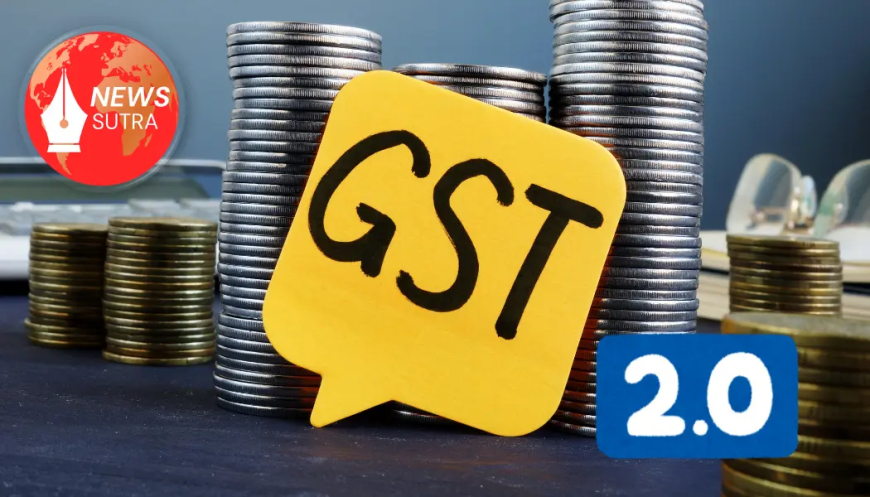GST 2.0 in Focus: Will the Upcoming Council Meet Finally Ease Small Business Woes?
As the GST Council prepares for its next meeting, can India’s small businesses expect genuine reform under GST 2.0? Dive into what’s on the table and why it matters.

As India approaches a crucial GST Council meeting later this month, small businesses and MSMEs across the country are watching closely. The long-promised "GST 2.0" overhaul could finally see the light of day—but will it actually address the grievances that micro, small, and medium enterprises (MSMEs) have raised for years?
With over 63 million MSMEs contributing nearly 30% to India’s GDP and employing over 110 million people, the need for a simplified and equitable GST framework has never been more urgent. This article dives into the proposed reforms, the pain points of small businesses, and what the Council needs to do to win back trust.
1. Why GST 2.0 Is on the Agenda Now
Introduced in 2017 as a historic tax reform, the Goods and Services Tax was meant to unify India’s indirect tax system. But for small businesses, it’s often been a compliance nightmare.
The upcoming meeting—reportedly scheduled for mid-June 2025—marks the first comprehensive GST overhaul discussion since the new government formation. According to The Hindu BusinessLine, key reforms likely to be tabled include:
-
Rationalisation of tax slabs
-
Quarterly return simplification
-
E-invoicing relaxation for small suppliers
-
Faster GST refunds for exporters
-
Composition scheme revision
2. What Small Businesses Are Struggling With
Despite being the backbone of the Indian economy, small business owners continue to grapple with several GST-related pain points:
a. High Compliance Burden
Filing multiple monthly returns, navigating frequent rule changes, and maintaining digital records have proven extremely taxing for small setups lacking IT infrastructure.
According to a report by NASSCOM and KPMG, 72% of small businesses say GST compliance adds “significant operational load.”
b. Delayed Input Tax Credit (ITC)
Input tax credit, once considered a GST benefit, has become a major bottleneck. Mismatches in GSTR-2B and GSTR-1, supplier defaults, and delayed reconciliation have blocked working capital for thousands of businesses.
c. Harassment Over Notices and Penalties
Frequent notices, often auto-generated by the GST portal, have led to disproportionate penalties for minor errors or filing delays. Many small entrepreneurs feel they are “guilty until proven innocent.”
d. Exclusion from the Composition Scheme
The current threshold of ₹1.5 crore for manufacturers and ₹50 lakh for service providers under the composition scheme is seen as outdated, especially after inflation and digital growth post-COVID.
3. What GST 2.0 Promises: Key Proposals on the Table
✅ Unified Monthly Return: GSTR-X
A single, simplified return form, provisionally titled GSTR-X, may replace GSTR-1, 2B, and 3B for businesses with turnover under ₹5 crore. This would significantly reduce paperwork and duplication.
✅ ITC Auto-Match System Using AI
The GSTN is reportedly working on an AI-driven ITC validation system to reduce manual intervention and errors. This could allow near-instant credit reconciliation for compliant taxpayers.
✅ Revised Composition Scheme Limits
The Council is also likely to consider raising the turnover threshold for the composition scheme to ₹2.5 crore for traders and ₹1 crore for service providers. This would allow more MSMEs to opt for easier compliance at lower tax rates.
✅ Reduced Penalty Norms
A proposal to cap late fees and minor error penalties is on the agenda, particularly to shield first-time defaulters from harsh financial consequences.
4. What Industry Bodies Are Demanding
Organizations like FISME, CAIT, and Laghu Udyog Bharati have submitted memorandums to the Finance Ministry. Their key demands include:
-
Annual filing option for businesses under ₹1 crore turnover
-
Optional e-invoicing for B2C businesses under ₹10 crore turnover
-
No ITC blockage for invoice mismatches under ₹10,000
-
Independent GST ombudsman for small business grievance redressal
A joint report by ASSOCHAM and Grant Thornton suggests that addressing these issues could boost MSME productivity by over 20% in just two years.
5. What the Government Has Said So Far
Finance Minister Nirmala Sitharaman has acknowledged the “undue compliance stress” faced by MSMEs. In a recent interaction, she noted:
“We are committed to simplifying the GST process and making it more MSME-friendly. Technology will play a central role in GST 2.0.”
The GST Council, chaired by the FM and comprising state finance ministers, will reportedly also revisit slab structures, potentially reducing the 18% rate burden on common-use goods and services.
6. Small Businesses: Hopeful but Wary
Despite the positive intent, skepticism remains high. Past council meetings have often ended with incremental adjustments, while real structural reform has been postponed.
Ravi Kothari, a garment manufacturer from Surat, puts it bluntly:
“Every meeting promises simplification, but on the ground, compliance keeps getting harder. Unless small business voices are heard in policymaking, GST 2.0 will just be a buzzword.”
7. Expert Insights on What Must Change
🔍 Clarity Over Exemptions and Classifications
Many businesses face uncertainty over HSN code classifications, often leading to disputes. Tax experts suggest a clear, centralized product classification guide to reduce ambiguity.
🔍 GST Tribunal Rollout
The delayed rollout of GST Appellate Tribunals (GSTATs) is another major issue. Small businesses currently face long delays in resolution, with most appeals lying pending before high courts.
Learn more about this at PRS Legislative Research – GST Tribunal Update
Conclusion: Will GST 2.0 Be More Than Cosmetic?
The upcoming GST Council meeting has the potential to be a landmark moment in India’s tax evolution—if it goes beyond optics. With small businesses facing disproportionate compliance costs, systemic reform is not just desirable—it’s essential.
GST 2.0 must be built with MSMEs at its core, not just as an afterthought. Simplification, transparency, and accountability should guide every reform. Until then, India’s small entrepreneurs will continue to wait—for fairness, clarity, and ease of doing business.
What's Your Reaction?
 Like
0
Like
0
 Dislike
0
Dislike
0
 Love
0
Love
0
 Funny
0
Funny
0
 Angry
0
Angry
0
 Sad
0
Sad
0
 Wow
0
Wow
0







































































